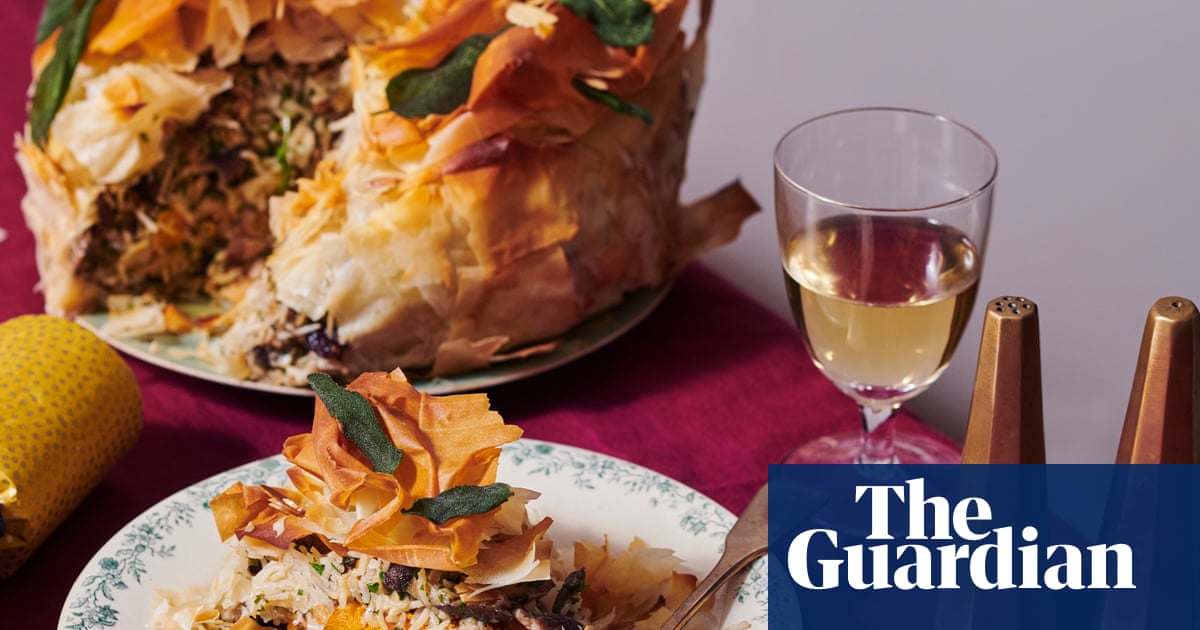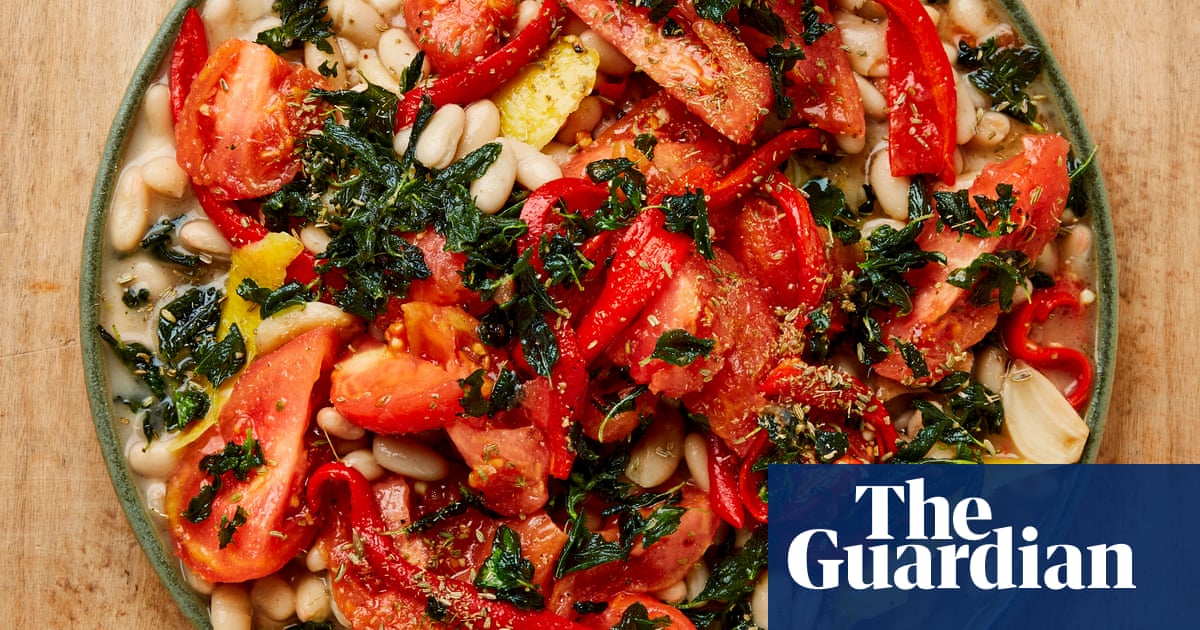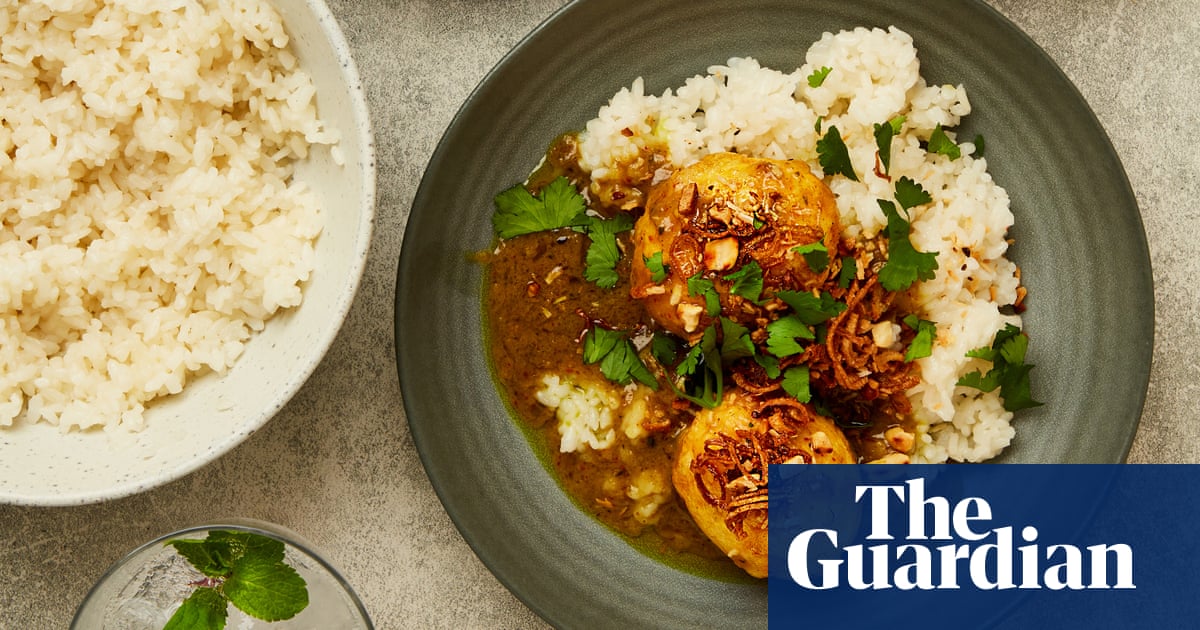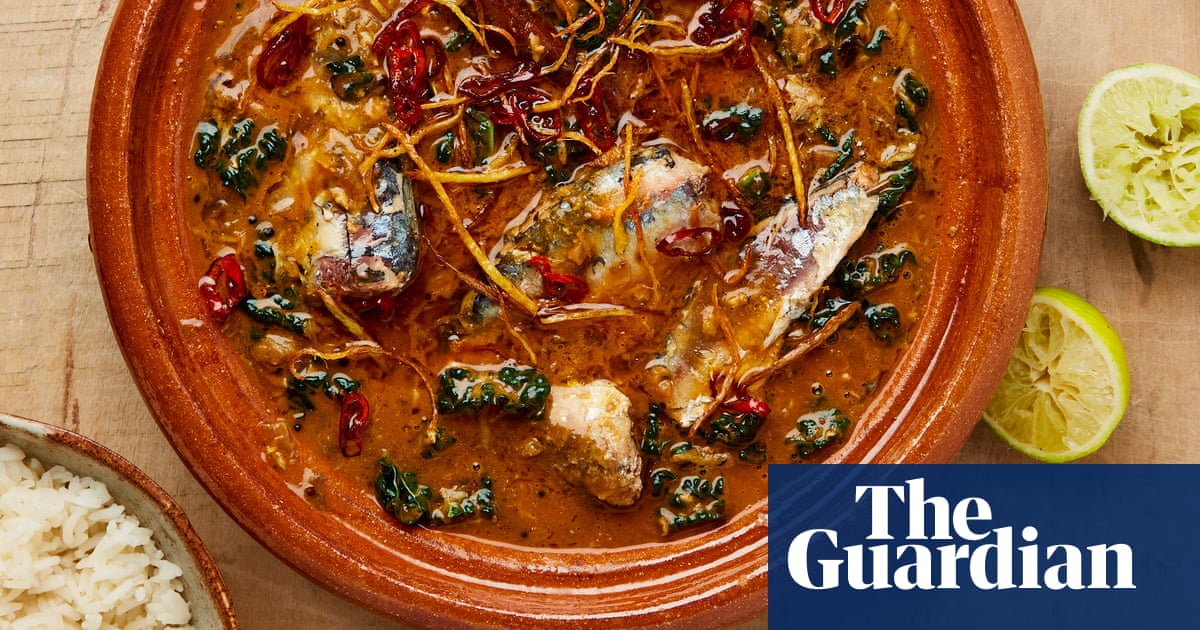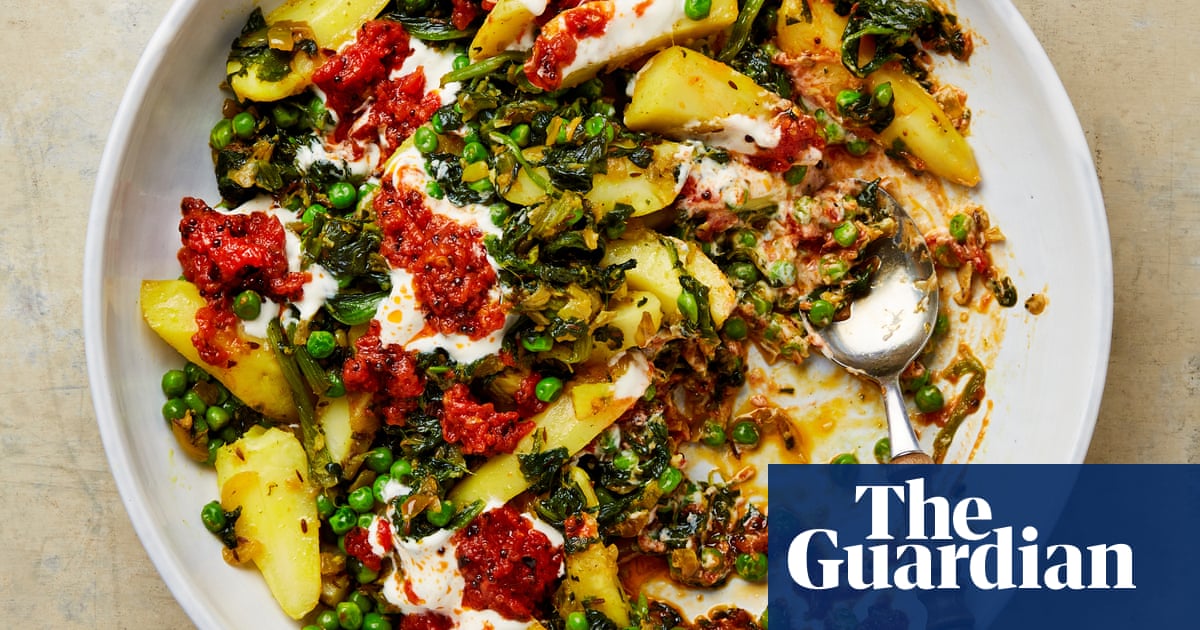
It’s a time of the year when there’s a gear change in what I want to eat. The new season makes me race even more quickly towards fresh vegetables, herbs and spices, and I often find myself eating only vegetarian and vegan dishes for days on end, and without even consciously trying to. The veg doesn’t have to be freshly sun-kissed and perfectly seasonal, either – the bags of peas and spinach in the freezer are still on heavy rotation, and the dried pulses remain a staple – but the resulting dishes, when everything comes together in sunny harmony, so often remind me of (and whet my appetite for) the heat of the sun.
Potato, spinach and peas with spicy tomato oil and yoghurt (pictured top)
This dish is inspired by the enormously popular combination of potatoes and peas of the classic aloo matar, a staple of north Indian cuisine. The spicy tomato oil and yoghurt add an entirely new element that works wonderfully well. Serve with plain rice or rotis (see recipe below).
Prep 15 min
Cook 25 min
Serves 4
3 waxy potatoes (500g), peeled and cut into 2cm x 5cm wedges
2 plum tomatoes (180g)
90ml vegetable oil
1½ tsp cumin seeds
1 medium onion, peeled and finely chopped (180g)
Fine sea salt
2 garlic cloves, peeled and crushed
20g fresh ginger, peeled and finely grated
¼ tsp ground turmeric
250g fresh or defrosted frozen peas
250g defrosted frozen spinach, squeezed dry
1 tsp chilli flakes (or less if you prefer things less spicy)
1 tsp black mustard seeds
2 tsp tomato paste
75g plain yoghurt
Bring a medium saucepan of well-salted water to a boil, then add the potato wedges and cook for 12 minutes, until cooked through. Strain through a colander set over the sink, set aside to drain well and wipe out the saucepan.
Meanwhile, set a small sieve over a small bowl and, using the coarse side of a box grater, grate in the tomatoes, discarding the skins as you go, then set aside.
Return the pan to a medium-high heat, add 60ml of the oil and, once it’s hot, add the cumin, onion and a teaspoon and a quarter of salt, and cook, stirring occasionally, for five minutes, until translucent. Stir in the garlic, ginger and turmeric, cook for a minute until fragrant, then pour in the strained tomato water from the bowl. Using a spoon, release any bits stuck to the bottom of the pan, then stir in the peas and spinach, and cook for another five minutes, until all the moisture has cooked out and the vegetables are nicely coated in the oil.
Meanwhile, put the remaining two tablespoons of oil in a small frying pan on a medium heat. Once hot, add the chilli flakes and mustard seeds, and cook for a minute, until they start to pop. Add the grated tomato pulp, tomato paste and a quarter-teaspoon of salt, and cook for three minutes, until the oil separates and the tomato darkens in colour.
Stir the potatoes through the spinach and peas, and cook on a medium-high heat for a minute or so, just to heat through, then transfer to a serving platter. Spoon on the yoghurt and serve with the tomato oil drizzled over the top.
Aubergine and mung bean curry with coriander cream
Stewed mung beans appear in various forms in multiple cultures, and especially throughout Asia and the Middle East. This very aromatic and spiced version has quite a kick of chilli heat, but that’s tamed by the coriander cream. Serve as a spread with this week’s other two dishes, or just as it is with plenty of rice.
Soak 30 min+
Prep 25 min
Cook 40 min
Serves 6
For the curry
160g dried mung beans
¼ tsp bicarbonate of soda
2 medium onions (300g), peeled and thinly sliced
5 garlic cloves, peeled and thinly sliced
20g fresh ginger, peeled and finely grated
20g fresh turmeric, finely grated
2½ tsp garam masala
2 red chillies (20g), thinly sliced (remove and discard the pith and seeds if you prefer less heat)
60g coconut cream, plus 100g extra for the coriander cream
For the aubergines
9 baby aubergines, or two regular aubergines (560g), cut lengthways into quarters from the base and leaving the stems attached
4½ tbsp olive oil
Fine sea salt
For the coriander cream
30g bunch coriander, 1 tbsp leaves picked and reserved
2 limes, juiced, to get 2½ tbsp
First, soak the mung beans. Put the dried beans in a colander, wash in lots of cold water, then tip into a bowl and add the bicarb. Add just-boiled water to cover, then leave to soak for at least 30 minutes to an hour, or overnight, until the beans have slightly softened.
Heat the oven to 240C (220C fan)/475F/gas 9. Put the aubergines and a tablespoon and a half of olive oil in a bowl with half a teaspoon of salt, toss to coat, then put skin side down on a large oven tray lined with baking paper. Roast for 20-25 minutes, until the aubergines have softened but are still holding their shape.
Meanwhile, put the remaining three tablespoons of olive oil in a large saute pan for which you have a lid and set it over a medium-high heat. Add the onions, garlic, ginger, turmeric, garam masala and chillies, and cook, stirring frequently, for 10 minutes.
Drain the mung beans, then add to the pan with 800ml fresh cold water and three-quarters of a teaspoon of salt. Stir to combine, bring up to a simmer, then turn down the heat to medium, cover and cook for 15 minutes, until tender.
Stir in 60g of the coconut cream, then add the aubergines, cover again and cook for another 10 minutes, until the aubergines are soft and the cooking liquid has thickened. Take off the heat and set aside, still covered, to rest for five minutes.
Meanwhile, make the coriander cream. Put the remaining 100g coconut cream in a food processor with the coriander, lime juice and a quarter-teaspoon of salt, blitz smooth, then scrape out into a bowl.
Spoon half the coriander cream all over the curry, scatter over the reserved coriander leaves and serve with the remaining coriander cream on the side.
Herby ghee rotis with preserved lemon pickle
I have a real fondness for lemon pickles, and this one, which makes use of preserved lemons as a welcome shortcut, is no exception. These rotis freeze very well, so if you can’t make use of them all, freeze the leftovers individually between sheets of greaseproof paper and wrapped in reusable kitchen wrap for up to a month. To make the rotis vegan, swap the ghee for olive oil.
Prep 15 min
Cook 30 min
Makes 8
160g wholewheat flour
160g plain flour, plus extra for dusting
30g parsley leaves, finely chopped
2 spring onions, trimmed and finely chopped (30g)
30g ghee, melted (or olive oil), plus 50g extra for brushing
Fine sea salt, plus flaked sea salt, to finish
For the preserved lemon pickle
90ml sunflower oil
2½ tsp black mustard seeds
½ tsp fenugreek seeds
½ tsp sweet smoked paprika
4 tsp aleppo chilli flakes
200g preserved lemons, hard pith and seeds discarded, skin and flesh chopped into ½cm pieces
¼ tsp caster sugar
First make the dough. Put the two flours, two thirds each of the parsley and spring onions, 200ml cold water, the ghee and a teaspoon and a quarter of salt in a large bowl. Mix well to combine, then knead by hand for about five minutes (or in a stand mixer with the dough hook for about three minutes). You should end up with a slightly sticky dough, but do not be tempted to add more flour. Cover with a tea towel and set aside to rest for 20 minutes.
Meanwhile, make the lemon pickle. Put the oil in a small saucepan on a medium heat and, once it’s hot, add the mustard and fenugreek seeds, and cook for 30 seconds, until fragrant. Stir in the paprika and aleppo chilli, then add the chopped preserved lemon and sugar, cook gently for three minutes, then take off the heat and leave to cool.
To make the rotis, lightly flour a work surface, then knead the dough into a smooth ball. Divide this into eight equal 70-75g pieces, roll each one into a ball, then cover with a clean tea towel.
Now prepare your roti cooking station. Put a medium frying pan on a medium-high heat for five minutes. Put the remaining 50g melted ghee and the remaining parsley and spring onions in a bowl and stir to combine – I use a pastry brush to do this. Put a clean tea towel on a plate. You are now ready to roll.
Sprinkle a little flour on the work surface and, using a rolling pin, roll one of the balls into an 18cm-wide disc (don’t worry if it’s not perfectly round). Shake off any excess flour, if need be, then lay the disc in the hot pan and leave to cook for a minute to 90 seconds, until the top of the roti is just starting to bubble. Brush the top with the herby ghee mixture, then flip over the roti and brush the other side with ghee. Cook for another minute, until small golden patches start to appear on the base, then take off the heat and transfer to the tea towel-lined plate. Sprinkle a little flaked salt on the cooked roti, fold the tea towel over the top to keep the roti warm, and repeat with the remaining dough balls and herby ghee.
Serve the rotis warm with the bowl of pickle in a bowl on the side.




